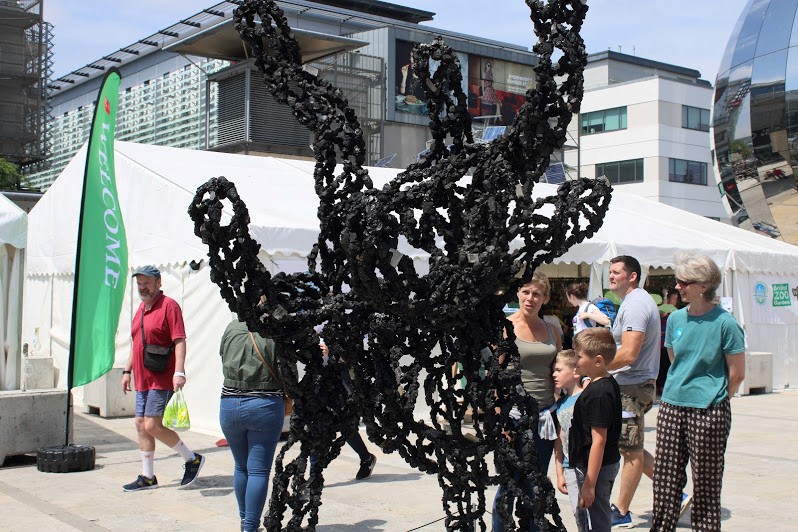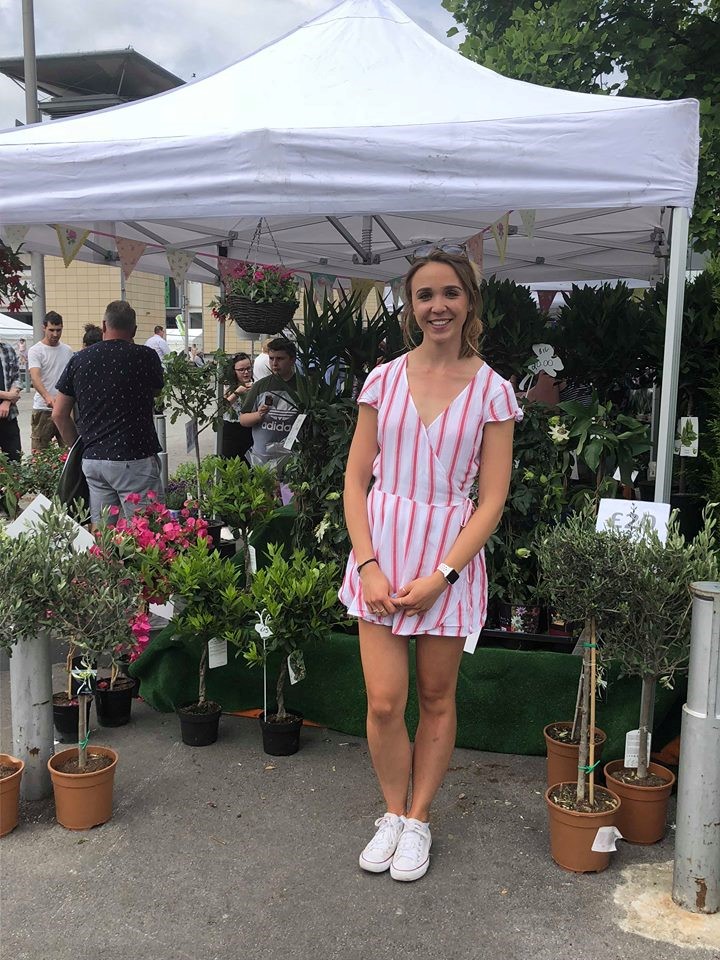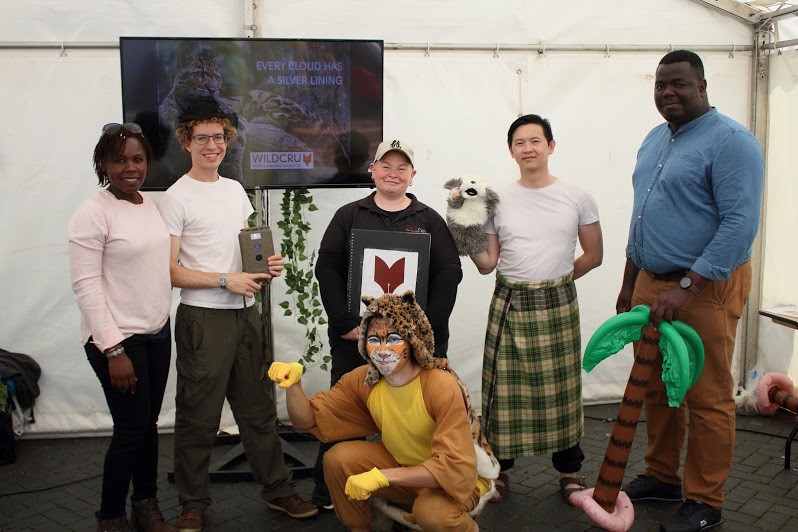Millennium square was a hive of activity on the 9th and 10th June as more than 50 enthusiastic organisations put on free events, including exhibitions, workshops and talks, to celebrate the broad topic of nature. Since the festival was first established in 2003, organisations such as the Avon Wildlife Trust, Bristol Zoo and, of course, the University of Bristol, have been chosen to inspire and educate the many who attend.
Despite the upbeat vibe and general excitement caused by the event, a serious message concerning the negative impact humans are having on the world could be found hidden amongst the majority of the activities. Perhaps where this message was portrayed most prominently was in a sculpture of a diesel soot particle which was three million times larger than the actual size. This new artwork, aptly named ‘Inhale’ and created by Luke Jerram, stood as a poignant reminder to all about what humans are breathing in as a result of air pollution.

Air pollution can cause damage to the lungs, leading to shortness of breath. The focus was on the fact that breathing is not just an important body function, the air within our lungs can be used to sing, speak and laugh, therefore, it is important to aid expression of human emotion and to communicate. A collaboration between Prof. Jane Macnaughton from Durham University and Prof. Havi Carei from the University of Bristol has led to a five-year research project funded by the Wellcome Trust called ‘Life of Breath’. It is hoped that an exploration of the use of breath in the arts, humanities, social sciences and medicine will aid people to live well with breathlessness. Members of the team were present at the festival, encouraging visitors to explore and learn more about their own lungs.

Through the provision of lively, interactive demonstrations, visitors discovered that their height was positively correlated to the capacity of their lungs. Participants were asked to fill their lungs with air, which when blown into a container would displace the water inside. When the participant could no longer blow air out of their lungs, the degree to which the water level had fallen indicated the capacity of the individual’s lungs. This data point was then added to a chart plotting lung capacity against the participant’s height. After a few hours, a positive correlation between the two variables emerged.
CO2 and methane are other examples of air pollutants and are also well-known greenhouse gases. It is thought that approximately one-third of greenhouse gases come from agriculture. For example, nitrous oxide is produced naturally in soils, methane is produced by animals as they digest their food, and the use of fossil fuels in agriculture production releases CO2. The pollution in the atmosphere is also increased by the destruction of large carbon sinks such as woodlands. Farming practices and the fragmentation of woodlands has taken a heavy toll on wildlife, such as dormice, as their habitats are progressively destroyed.
However, how can we encourage younger generations, which are arguably more disconnected from the benefits of nature than any other generation before, to protect the environment? One solution is to educate them and endeavour to show the beauty and inspiration that can be found in nature. This festival encouraged and inspired those that attended in a multitude of ways to do just that.

Parents could be seen throughout the festival encouraging their children to take an interest in local wildlife. The Bristol Museum enabled visitors to look at their plant fossils and herbariums and to press their own plants in order to explore how they were preserved two hundred years ago. Participants would then be helped to identify the plant that they had pressed.
Bristol Zoo used creative methods to encourage visitors to identify wildlife that could be found in the Avon Gorge and Downs. Children were asked to choose a mask from a choice of billy goats, peregrine falcons, butterflies, badgers and the Bristol onion. Tactfully, the Bristol Zoo staff would ask which mask the children wanted by interjecting interesting facts about each species; “Peregrine falcon; the fastest animal in the world which travels at over 200mph!” or “Bristol onion; only found in the Avon Gorge in the whole of the UK!” were facts told to excite the participants. Inspiration for their artistic creations were found from nature, for example, they would study different species of butterfly to inspire their designs. When they were finished, their creations would be made into masks for them to wear.

The Wildlife Trust encouraged visitors to ‘give it a go’ themselves. The team spoke to children concerning the decline in the number of dormice and the work being done to capture and reintroduce this species into woodland. Examples of dormice nests and cracked nuts were shown so that the visitors could spot when dormice were present in a woodland as well. One way in which the presence of dormice could be noticed is by how they cracked open the nuts. Members of the wildlife trust spoke enthusiastically about the ‘chief nutter’, the man who first learnt to distinguish how a nut opened by a dormouse was different from a nut opened by any other species; teeth marks of dormice are across the edge of the opening of a nut, like a chisel.
Bristol Zoo took a similar approach; children participated in a ‘peregrine chick checking’ activity. Toy baby Peregrine Chicks had been made that were the approximate weight of a real chick. Young participants would measure the beak, head and wing using callipers, then weigh and ring the bird. Using the information obtained, they could then determine whether the chick they were checking was male or female, as female peregrine falcons are heavier than males.

Critical decisions must be made to prevent the destruction of our planet, however, the choices made often come at a cost. The lively and interactive clouded leopard play that took place enabled the audience to vote in order to make decisions regarding the conservation of the clouded leopard and its home. This encouraged the audience to weigh up the benefits and costs of a decision and decide what they would do in realistic dilemmas. One situation that arose was the deforestation of the forest that the leopard lived in; this would have benefited the economy as crops could be grown there and the wood from the trees could be used by the locals as fuel, however, it would have destroyed the leopard’s habitat. Despite the immediate benefits to the local community, it was interesting that the audience often voted to save the leopard’s habitat.

There are many organisations actively working to restore nature across Britain; the green forum tent was a place for them to advertise their ideas and motivate visitors to aid them in their efforts to make a difference. The ‘Blue Campaign’ asked for visitors to allow part of their lawn to grow naturally to encourage an abundance of new life into that area, ‘Feel Good Food, Feel Good Farming’ supports sustainable agriculture and local produce, and ‘Shared Interest’ provide fair finance to fair trade farmers and handcraft makers across the globe. The ‘Shape Our City’ stall advertised their creative engagement project named ‘Our City Our Health’. This project involves a collaboration between UWE, UPSTREAM researchers and Bristol citizens who are trying to understand what changes should be prioritised in their aim to achieve healthy urban development.
The prominent sculpture, created by Jerram, was part of the UWE Bristol public engagement project; this succeeded at sparking conversations about how we could shape our future for the better. All in all, visitors went away with at least a few wishes about what they would like to change in order to improve the environment we live in. UWE had put up a wishing tree on which visitors wishes were written; “more allotments please”, “more street trees please”, “green walls on buildings” and “more community food-sharing events”; all ideas full of hope for a world that is greener, more diverse and more sustainable than it is right now.

Written by Lydia Rowland (year 3 Biology BSc)

